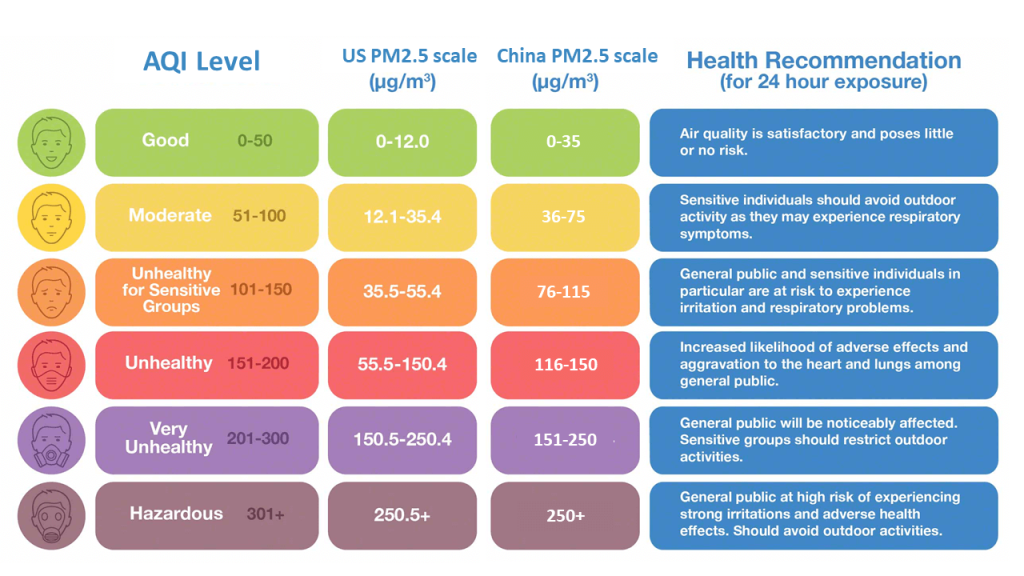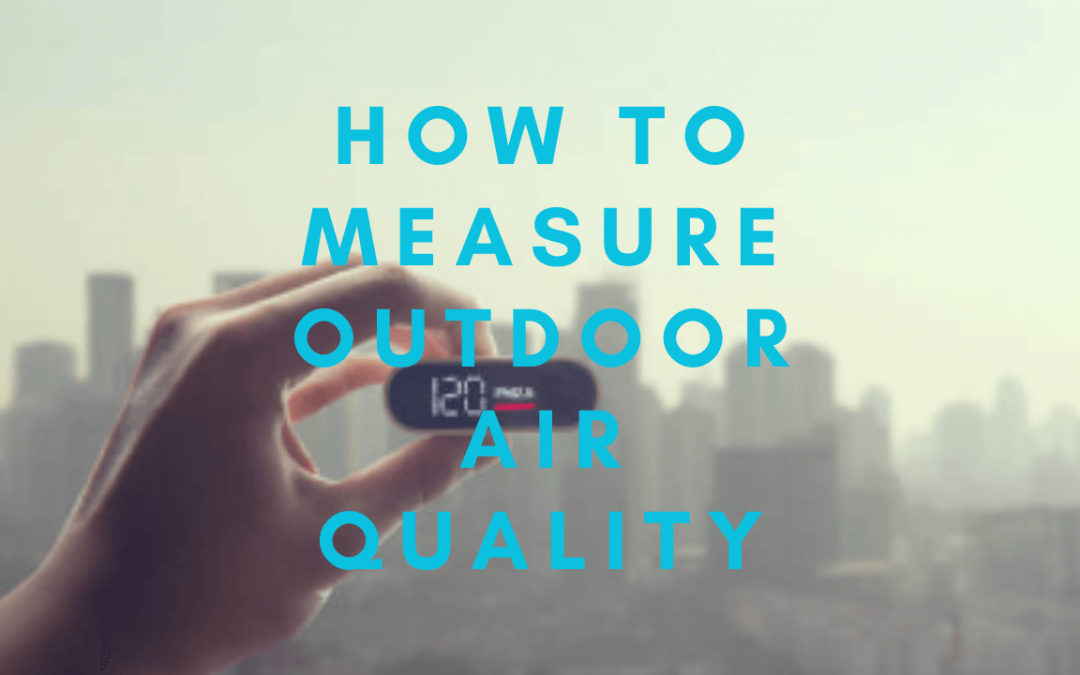From this perspective, it is crucial to recognize the detrimental effects poor outdoor air quality can have on both human health and the environment. I understand the significance of measuring air quality in order to safeguard public health and the well-being of our ecosystems. The World Health Organization estimates that air pollution is responsible for approximately 7 million premature deaths annually worldwide, making it the fourth leading risk factor for premature mortality on a global scale.
Measuring outdoor air quality is a fundamental aspect of comprehending the extent of air pollution in different regions and identifying its sources. By conducting measurements, we can determine the presence of specific pollutants, their concentrations, and how they vary over time. This knowledge is invaluable in formulating strategies to mitigate air pollution and safeguard public health.
In this blog post, we will delve into the fundamentals of measuring outdoor air quality, encompassing the various factors that influence air quality, the types of available measurement techniques, the parameters typically assessed, methods for interpreting air quality data, and suggestions for enhancing outdoor air quality.
Factors that Affect Outdoor Air Quality

I recognize the multitude of factors that can influence outdoor air quality, encompassing both natural and human-made elements. Understanding these factors is essential in comprehending the sources and causes of outdoor air pollution in various regions. Here are some of the most common factors that impact air quality:
Weather: Weather patterns, including wind and temperature inversions, play a significant role in shaping outdoor air quality. Wind has the ability to disperse pollutants, whereas temperature inversions can trap pollutants close to the ground.
Geography: The geographical features of a region can also exert an influence on air quality. For instance, cities situated in valleys or surrounded by mountains may experience poor air quality due to stagnant air and the accumulation of pollutants.
Human activities: Human activities such as transportation, industrial operations, and energy production have a considerable impact on air pollution. Emissions from vehicles, industries, and the burning of fossil fuels are among the primary contributors to outdoor air pollution.
Natural sources: Natural occurrences such as wildfires and volcanic eruptions can also contribute to diminished air quality. While these natural sources of air pollution are beyond our control, they can still exert a significant influence on outdoor air quality.
By comprehending these factors and identifying the sources of air pollution, we can develop effective strategies to mitigate its detrimental effects and enhance outdoor air quality. It is our responsibility to advocate for measures that protect the health of trees and the overall well-being of our environment.
Types of Air Quality Measurements
It is crucial to be aware of the various types of air quality measurements available, each presenting its own set of advantages and limitations. Here are some of the most common types of air quality measurements:
Monitoring stations: Monitoring stations are stationary devices strategically placed to measure air quality in specific locations over an extended period. These stations typically assess pollutants such as particulate matter, nitrogen dioxide, and ozone. Monitoring stations offer high accuracy and provide comprehensive data, enabling a thorough analysis of air quality trends. However, operating and maintaining monitoring stations can be expensive.
Portable monitors: Portable monitors are handheld devices that provide real-time air quality measurements. They are small, user-friendly, and relatively cost-effective. Portable monitors have the ability to measure various pollutants, including particulate matter, carbon monoxide, and nitrogen dioxide. While portable monitors offer convenience, they may not possess the same level of accuracy as monitoring stations and may have limitations in terms of measurement capabilities.
Sensors: Sensors are compact devices that can be installed in homes or vehicles to measure air quality. They are affordable and offer real-time data on air quality conditions. However, it’s important to note that sensors may not deliver the same level of accuracy as monitoring stations or portable monitors. Additionally, sensors may be designed to measure specific pollutants rather than providing a comprehensive assessment.
Parameters to Measure
It is crucial to recognize the key parameters that are typically measured to assess outdoor air quality. The following parameters hold significant importance:
Particulate matter (PM): Particulate matter refers to minuscule particles suspended in the air that can be inhaled into the lungs. These particles originate from sources such as vehicle emissions, industrial activities, and wildfires. PM is classified based on size, with smaller particles posing greater risks to human health. PM2.5, for instance, denotes particles with a diameter of 2.5 micrometers or smaller.
Ozone (O3): Ozone is a gas formed through the reaction of sunlight with pollutants like nitrogen oxides and volatile organic compounds. It can lead to respiratory issues and is particularly detrimental to individuals with asthma or other respiratory conditions.
Nitrogen oxides (NOx): Nitrogen oxides encompass a group of gases emitted by sources such as vehicle emissions, industrial activities, and more. They can cause respiratory problems and contribute to the formation of smog.
Sulfur dioxide (SO2): Sulfur dioxide is a gas released during industrial activities and the combustion of fossil fuels. It can induce respiratory issues and contribute to the formation of acid rain.
Carbon monoxide (CO): Carbon monoxide is a colorless and odorless gas emitted by sources like vehicle emissions. Elevated levels of CO can pose harm, even leading to fatalities.
Measuring these parameters provides vital information regarding the air quality of a specific region. By assessing these parameters, we can identify the presence and concentrations of pollutants. This knowledge enables us to develop effective strategies for reducing air pollution and safeguarding public health. Understanding these parameters allows us to make informed decisions regarding tree health and ecosystem management, as trees are also vulnerable to the impacts of poor air quality.
Methods to Measure Outdoor Air Quality
We recognize the range of methods available to measure outdoor air quality, each with its unique set of advantages and limitations. Here are some of the most common methods:
Gravimetric method: The gravimetric method involves collecting particulate matter on a filter and weighing it. This method yields accurate results, but it necessitates laboratory analysis, which can be time-consuming and costly.
Spectrophotometry: Spectrophotometry measures the absorption of light by pollutants in the air. It is useful for assessing gases like ozone and nitrogen dioxide, but it may not be as precise for measuring particulate matter.
Electrochemical sensors: Electrochemical sensors gauge the concentration of gases such as carbon monoxide and nitrogen dioxide. They are relatively affordable and provide real-time measurements. However, their accuracy may not be on par with other methods.
Optical particle counters: Optical particle counters employ light scattering to measure the concentration and size distribution of particles in the air. They are effective for assessing particulate matter, though they may be less accurate when measuring gases.
Remote sensing: Remote sensing employs instruments such as lidar or radar to assess air quality from a distance. While this method offers a broad perspective of air quality in a region, it may not provide the same accuracy as other methods for measuring specific pollutants.
Each method possesses its own strengths and limitations. A combination of different methods often provides a more comprehensive understanding of outdoor air quality within a specific region. We rely on accurate air quality data to make informed decisions that promote the health and well-being of trees and ecosystems.
Importance of Measuring Outdoor Air Quality:

Measuring outdoor air quality holds paramount importance from the perspective of several compelling reasons. Let’s delve into each aspect:
Firstly, air pollution poses significant risks to human health. Particulate matter and nitrogen oxides, among other pollutants, can lead to respiratory problems, cardiovascular diseases, and premature mortality. By conducting outdoor air quality measurements, we can pinpoint areas with elevated pollution levels and implement measures to mitigate exposure, safeguarding public health.
Secondly, measuring outdoor air quality is crucial for environmental protection. Air pollution adversely affects ecosystems, contributes to climate change, and contributes to the occurrence of acid rain. Through comprehensive air quality measurements, we can identify pollution sources, formulate effective strategies to reduce emissions and promote the preservation of our natural environment.
Thirdly, measuring outdoor air quality is indispensable for ensuring regulatory compliance. Many countries have implemented regulations to limit pollutant emissions from industrial activities and vehicles. By conducting thorough air quality measurements, we can ascertain adherence to these regulations and take appropriate action if deviations are detected.
Lastly, measuring outdoor air quality plays a pivotal role in raising public awareness. By disseminating air quality data to the public, we can educate individuals about the significance of reducing air pollution and inspire behavioral changes. For instance, individuals may choose sustainable transportation options like walking, biking, or utilizing public transit instead of relying solely on private vehicles, thereby minimizing their contributions to air pollution.
In conclusion, measuring outdoor air quality is an integral part of responsibilities as it safeguards human health, protects the environment, ensures regulatory compliance, and promotes public awareness. By employing accurate and reliable measurement methods and transparently sharing the data, we can collectively strive towards reducing air pollution and fostering a cleaner and healthier environment for all.
Conclusion
In conclusion, we understand the utmost significance of measuring outdoor air quality to ensure the protection of human health, the environment, and regulatory compliance. To determine outdoor air quality accurately, several parameters are typically measured, including particulate matter, ozone, nitrogen oxides, sulfur dioxide, and carbon monoxide. These parameters can be effectively assessed through various methods such as gravimetric methods, spectrophotometry, electrochemical sensors, optical particle counters, and remote sensing.
The act of measuring outdoor air quality enables us to identify regions with elevated pollution levels, allowing us to implement necessary measures to reduce exposure and safeguard public health. Additionally, by identifying pollution sources through air quality measurements, we can develop effective strategies aimed at reducing emissions and preserving the integrity of our environment. Moreover, measuring outdoor air quality is vital for ensuring compliance with regulatory standards, and sharing this data with the public serves as a means to raise awareness regarding the importance of reducing air pollution and inspiring behavioral changes.
In light of the urgent global challenge of reducing air pollution, the act of measuring outdoor air quality serves as a vital tool. By closely monitoring air quality, we can pinpoint areas of concern and proactively take action to curtail emissions, protecting both public health and the environment. It is imperative that individuals, businesses, and governments collaborate in this endeavor to mitigate air pollution and strive towards creating a cleaner and healthier world for present and future generations.

